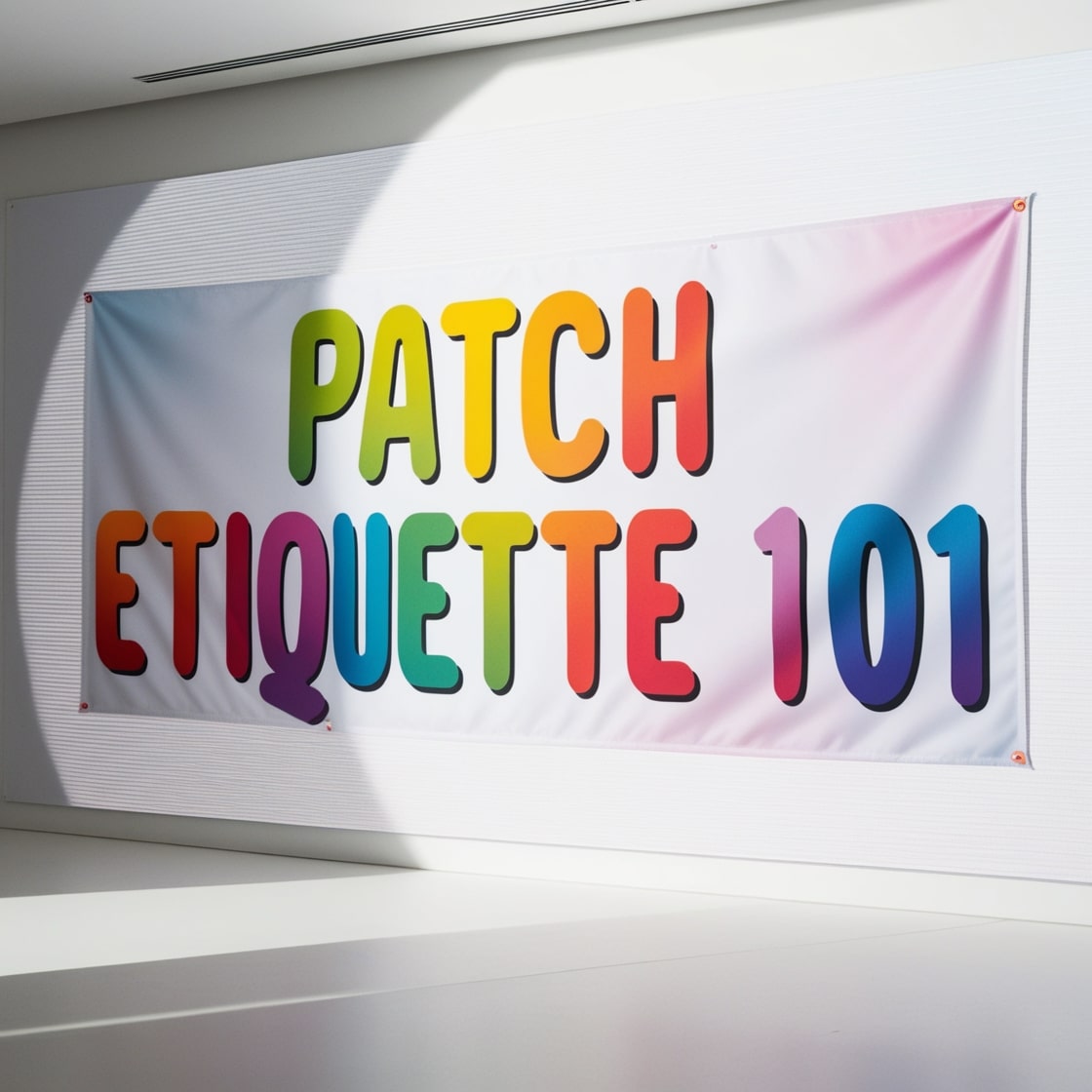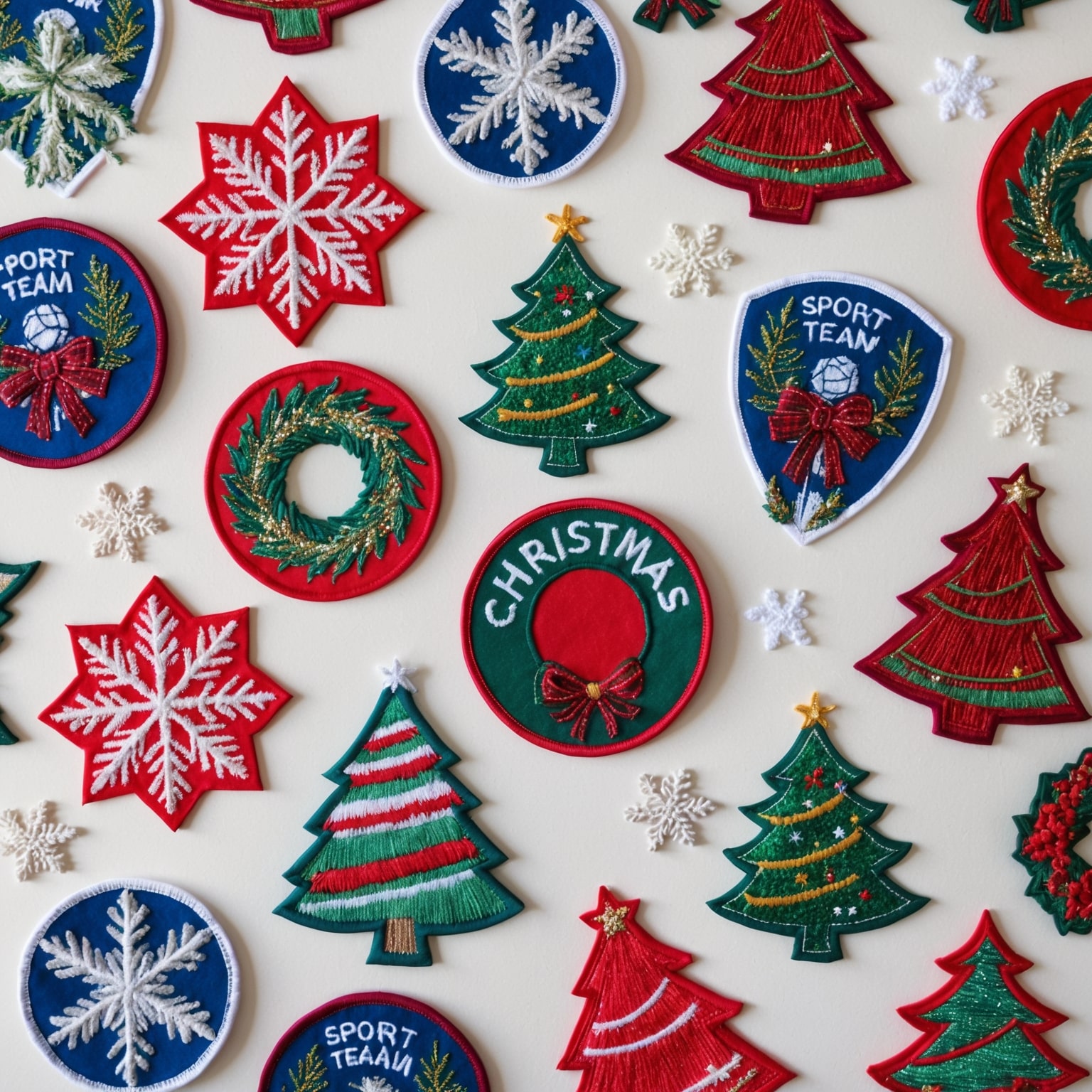Imagine you’re at a veterans’ reunion, proudly wearing a jacket adorned with patches that tell the story of your military service. You notice a fellow attendee looking puzzled at your patch arrangement. Are your patches correctly placed? Have you adhered to the unspoken rules of patch etiquette? Patches are more than just fabric—they are symbols of identity, achievement, and honor. Knowing how to wear and display them properly is crucial. Let’s dive into the essential dos and don’ts of patch etiquette to ensure you wear your patches with pride and respect.
Patches serve as powerful symbols of affiliation, achievement, and personal history. From military and scouting patches to those representing hobbies and organizations, these small pieces of fabric carry significant meaning. However, wearing and displaying them correctly requires an understanding of patch etiquette. This article explores the essential dos and don’ts of patch etiquette, addresses common concerns, and provides practical tips for proper patch wear and display.
The Importance of Patch Etiquette
Symbols of Identity and Achievement:
Patches are not just decorative items; they represent personal and collective accomplishments, affiliations, and experiences. Wearing them correctly shows respect for the symbols and the stories they represent.
- Recognition and Respect: Proper patch etiquette ensures that the patches are displayed in a manner that respects their significance and honors the achievements they symbolize.
Example: A military veteran wearing a uniform with patches that signify their rank, unit, and service history must adhere to specific guidelines to honor the military tradition.
Dos and Don’ts of Patch Wear and Display
When it comes to wearing and displaying patches, following proper etiquette ensures that the symbols are respected and correctly interpreted. Here are some essential dos and don’ts to guide you:
Do: Understand the Significance of Each Patch
Dos:
- Research Each Patch: Before wearing or displaying a patch, take the time to understand its history, meaning, and significance. This knowledge ensures you wear it with the respect it deserves.
Example: A military patch often includes symbols and colors that reflect the unit’s history and accomplishments. Understanding these elements helps you appreciate the patch’s significance. - Respect the Tradition: Each patch represents a specific tradition and heritage. Wearing it correctly honors those who have earned it before you.
Example: Veterans wearing patches from their service days adhere to the placement and significance rules to honor their military tradition.
Don’ts:
- Don’t Wear Unauthorized Patches: Avoid wearing patches that you have not earned or are not authorized to wear. This is especially important for military patches, where unauthorized wear can be seen as disrespectful or even fraudulent.
Example: Wearing a Navy SEAL patch without having served in the SEALs undermines the honor and achievement associated with that patch. - Don’t Mix Inappropriate Patches: Avoid mixing patches from different organizations or contexts that may have conflicting meanings or cause confusion.
Example: Combining military patches with patches from a social club or hobby group on the same jacket can dilute the significance of each patch.
Do: Follow Official Guidelines
Dos:
- Adhere to Guidelines: Follow the official guidelines for patch placement and wear specific to the organization. These guidelines ensure uniformity and respect for tradition.
Example: The Boy Scouts of America provides detailed instructions on where each patch should be placed on the uniform, ensuring consistency and respect for the organization’s traditions. - Consult Resources: Utilize resources like official manuals, guides, and websites to ensure you’re following the correct guidelines for your patches.
Example: A scouting leader might use the Boy Scouts of America Insignia Guide to correctly place patches on scouts’ uniforms.
Don’ts:
- Don’t Ignore Official Guidelines: Ignoring official guidelines for patch placement and wear can result in improper display and disrespect for the organization’s traditions.
Example: Incorrectly placing a military patch, such as putting a combat badge on the wrong shoulder, can be seen as a sign of ignorance or disrespect. - Don’t Assume Placement: Avoid assuming where patches should be placed without consulting the official guidelines.
Example: Placing a leadership patch on a scout’s uniform without checking the correct placement in the insignia guide can lead to confusion and incorrect display.
Do: Maintain Your Patches
Dos:
- Keep Patches Clean: Regularly clean your patches and the garments they are attached to. Clean patches reflect pride in your achievements and respect for the symbols they represent.
Example: A biker keeps their club patches clean and well-maintained, showing respect for the club and its members. - Securely Attach Patches: Ensure that patches are securely attached to avoid loss or damage. Use proper stitching or Velcro to keep patches in place.
Example: A military uniform with securely attached patches ensures they stay in place during physical activity and harsh conditions.
Don’ts:
- Don’t Overload Your Attire: Avoid wearing too many patches at once, as it can look cluttered and detract from the significance of each patch.
Example: A jacket with too many patches can make it difficult to appreciate individual patches and their meanings. - Don’t Neglect Patch Care: Failing to care for your patches can result in faded colors, loose threads, and a generally worn appearance, which reflects poorly on the achievements they represent.
Example: A faded and damaged patch on a scouting uniform might give the impression of neglect and lack of respect for the organization.
Future Trends in Patch Etiquette
Technological Integration:
As technology advances, patches are evolving to include features like RFID chips and QR codes, adding functionality and new dimensions to patch etiquette.
- Example: A patch with an embedded QR code could link to a digital profile or history, providing more context and information about the achievements it represents.
Sustainable Materials:
With growing environmental awareness, sustainable and eco-friendly materials are becoming popular in patch production. This trend impacts patch etiquette, emphasizing the importance of sustainability.
- Example: Patches made from recycled materials can be worn and displayed as a commitment to environmental responsibility.
Practical Tips for Proper Patch Wear and Display
Ensuring that patches are worn and displayed correctly involves more than just following basic guidelines; it requires attention to detail, respect for the patches’ significance, and practical strategies to maintain their appearance. Here are some detailed tips to help you wear and display your patches with pride and respect.
1. Placement Matters:
Proper placement of patches is crucial to maintaining uniformity and respect for the organization they represent.
- Follow Official Guidelines: Each organization typically has specific guidelines for patch placement. These guidelines ensure that patches are worn consistently and respectfully.
Example: In the military, unit patches are often worn on the left shoulder, while qualification badges and rank insignia have designated positions on the uniform. - Symmetry and Balance: Ensure patches are symmetrically placed and balanced on the garment. This not only looks visually appealing but also reflects attention to detail and respect for the patches’ significance.
Example: A scouting uniform should have patches evenly distributed between the left and right sleeves to maintain a balanced appearance.
2. Display with Pride:
When it comes to displaying patches on items like jackets, vests, or display boards, organization and presentation are key.
- Organized Arrangement: Arrange patches in a logical order, such as by rank, achievement level, or chronological order. This helps tell a story and allows each patch to be appreciated individually.
Example: A display board for scouting patches could be organized by rank advancements at the top, merit badges in the middle, and special awards at the bottom. - Clean and Neat Display: Ensure that the surface on which patches are displayed is clean and in good condition. This enhances the overall presentation and ensures the patches are shown in the best possible light.
Example: A leather biker vest should be kept clean and well-maintained to provide a neat backdrop for club patches and ride commemorations.
3. Respect Traditions:
Adhering to the traditions and customs associated with patch wear and display shows respect for the organization and its members.
- Understand Organizational Customs: Each organization has its own traditions regarding patch wear and display. Familiarize yourself with these customs to ensure you are adhering to them correctly.
Example: Biker clubs often have specific rules about how and where patches should be worn, reflecting the club’s hierarchy and achievements. - Participate in Ceremonies: Participate in ceremonies where patches are awarded or displayed. This can enhance your understanding of their significance and ensure you are part of the tradition.
Example: Attending a court of honor ceremony in scouting where patches and badges are awarded can provide insight into their significance and proper wear.
4. Secure Attachment:
Ensuring patches are securely attached prevents them from becoming lost or damaged.
- Proper Stitching or Velcro: Use appropriate methods to attach patches securely. Stitching is often the most durable method, but Velcro can be useful for patches that need to be removed or repositioned.
Example: Military uniforms often use stitching for permanent patches and Velcro for those that may need to be frequently changed, such as deployment or unit patches. - Reinforce Weak Spots: Check patches regularly for signs of wear and reinforce any weak spots. This helps ensure that the patches remain securely attached over time.
Example: Regularly inspect the edges of your patches for loose threads and reinforce them with additional stitching if necessary.
5. Maintain Appearance:
Keeping patches and the garments they are attached to in good condition is essential for proper patch etiquette.
- Regular Cleaning: Clean your patches and garments regularly to keep them looking their best. Follow specific care instructions for different materials to avoid damage.
Example: Embroidered patches can typically be cleaned with a mild detergent and air-dried, while leather patches may require special leather cleaning products. - Avoid Overloading: Don’t overload your attire with too many patches, as it can look cluttered and diminish the impact of each patch.
Example: A biker jacket might look best with a few well-placed patches representing key affiliations and achievements, rather than being completely covered.
6. Choose the Right Size and Shape:
Selecting the appropriate size and shape for your patches ensures they fit well on the garment or display surface.
- Tailored Fit: Ensure the patch size is proportional to the garment. Too large a patch can overwhelm the attire, while too small a patch might not be visible enough.
Example: A medium-sized circular patch might be ideal for a jacket sleeve, while a small rectangular patch could be perfect for a hat.
By following these practical tips, you can ensure that your patches are worn and displayed with the respect and significance they deserve. Proper patch etiquette not only honors the symbols and achievements they represent but also enhances your overall appearance and the message you convey through your patches.
Conclusion
Proper patch etiquette is essential for honoring the significance of the patches you wear and display. By understanding the dos and don’ts of patch wear and display, you can ensure that you show respect for the symbols and achievements they represent. Whether you’re in the military, scouting, or any other organization, adhering to patch etiquette enhances the value of these meaningful emblems. Embrace the traditions, respect the guidelines, and wear your patches with pride.
If you are interested in purchasing high-quality custom patches, feel free to call us at 1-877-503-8485 or fill out one of our FREE quotes here.




